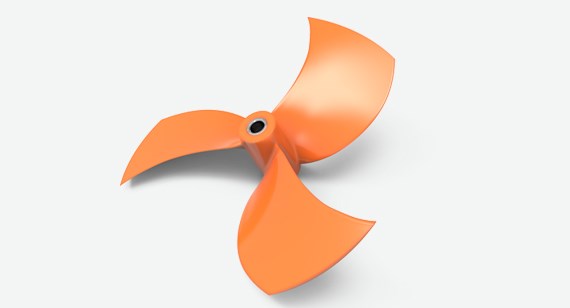Design Considerations for Overmolding and Insert Molding

Insert molding enables designers to integrate threaded metal inserts into components as an alternative to inserting metal parts by either heat staking or ultrasonic welding. Image courtesy of Proto Labs Inc.
Latest News
July 17, 2017
If you think overmolding describes that unpleasant container you found in the back of your fridge, today’s Check it Out article will set you straight. If you know that it’s an injection-molding process for adding a layer of resin to an existing molded part, the good stuff you’ll learn today should resonate throughout your design workflow.
Laying on or placing in some resin over a molded substrate makes a part with characteristics you cannot get from either material. You might use overmolding for a better hand feel, appearance or seal. Overmolded parts are commonly found on that soft grip on hard plastic-molded toothbrushes, but you also readily can find the process used in medical devices, hand tools gaskets and the like.
 Insert molding enables designers to integrate threaded metal inserts into components as an alternative to inserting metal parts by either heat staking or ultrasonic welding. Image courtesy of Proto Labs Inc.
Insert molding enables designers to integrate threaded metal inserts into components as an alternative to inserting metal parts by either heat staking or ultrasonic welding. Image courtesy of Proto Labs Inc.Overmolding offers many design options but, like everything else, the process has unique development issues. “Design Considerations for Overmolding and Insert Molding” from Proto Labs explains key overmolding methods, what’s in them for you and how you can determine the best process for your needs. It does its job well, thoroughly and concisely. Both old hands and rookies should find it highly informative.
As the page you’ll land on says, this article is a guide to two-material molding and bonding options with plastics, elastomers and metal inserts. Tutorial in flavor, the discussion begins with an overview of the two main overmolding technologies—two-shot molding and pick-n-place molding. Here, the first of the article’s two straightforward charts provides a non-biased listing of the pro factors of these process—things like costs, time to market and quantities.
Next comes bonding, followed by materials. This is the heart of the matter since overmolded layers separating or busting stinks. There’s lots to consider here like tensile pull, shearing and chemical and mechanical bonding. The article explains trouble areas and provides tips to keep you out of trouble. Bonding material compatibility is a big consideration, and a keeper of a chart details which materials go together best.
It all comes down to why you might use overmolding and insert molding, and that’s the final section. Topics to consider here include final part and production cost benefits, application range, prototyping, volume size and the like.
Your takeaway: “Design Considerations for Overmolding and Insert Molding” is worth every minute you spend with it. Likely, you’ll bookmark it for later reference. It’s that good. Hit today’s Check it Out link and see for yourself.
Thanks, Pal. – Lockwood
Anthony J. Lockwood
Editor at Large, DE
Subscribe to our FREE magazine, FREE email newsletters or both!
Latest News
About the Author
Anthony J. Lockwood is Digital Engineering’s founding editor. He is now retired. Contact him via [email protected].
Follow DE







